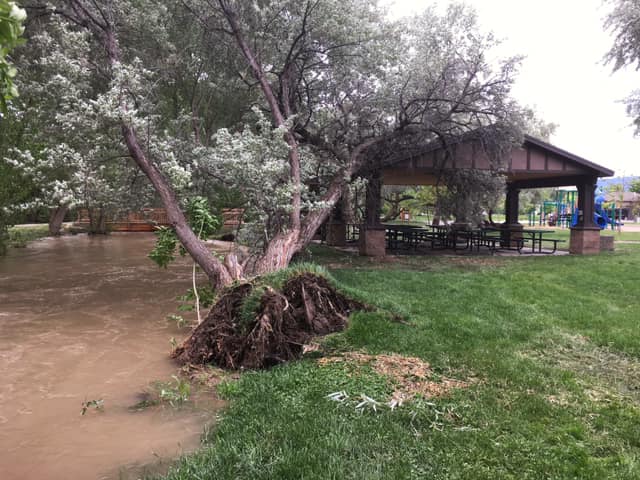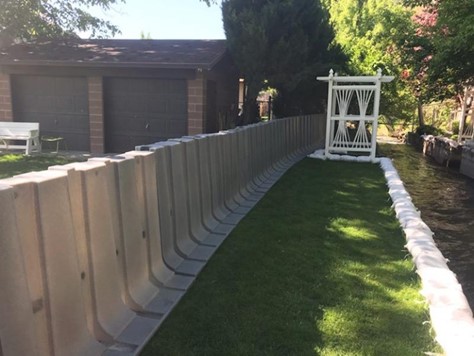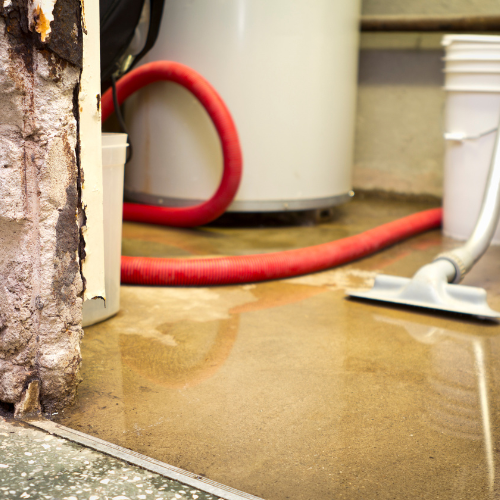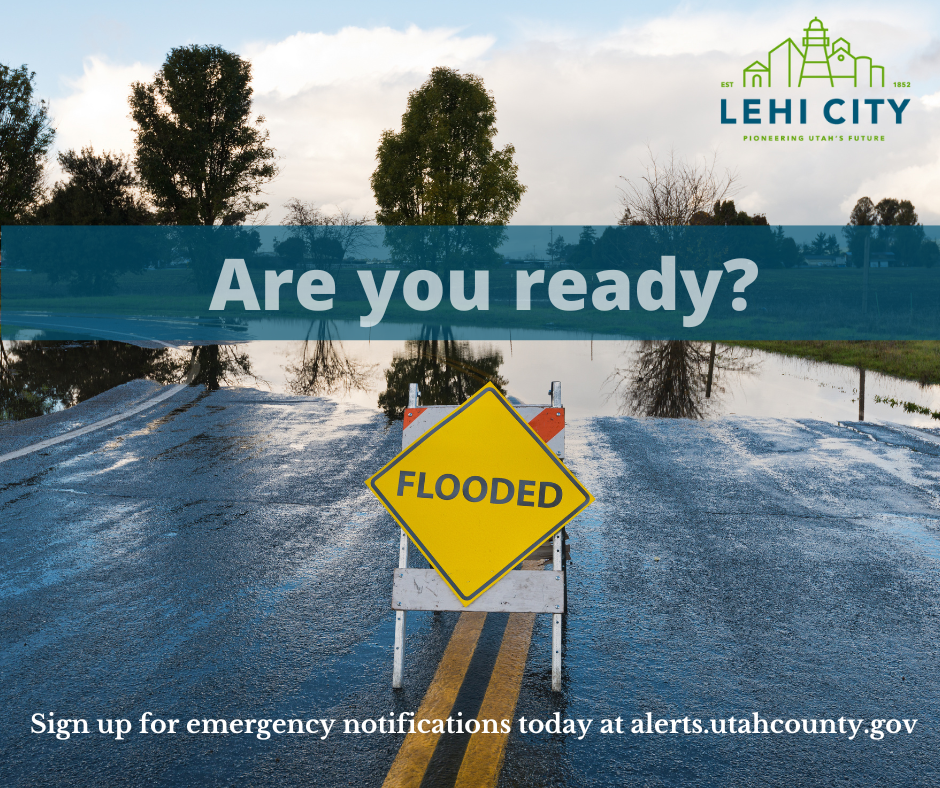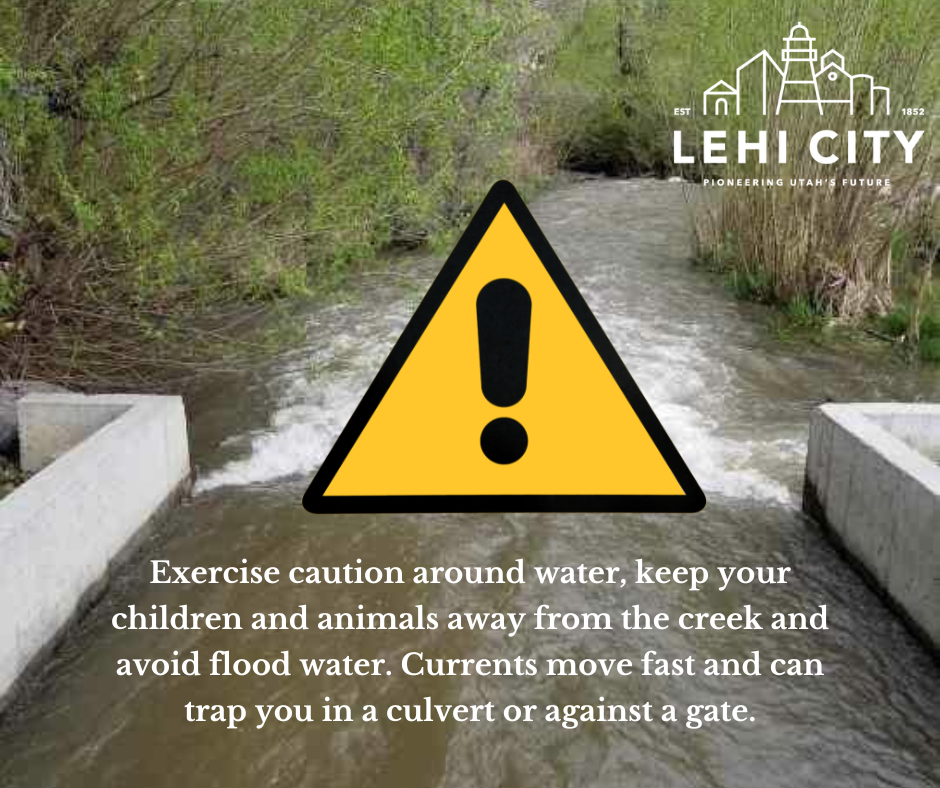- Community
- Parks & Recreation
- Services & Information
- Government
- Departments
- Lehi Fiber
- Pay Utility Bill
- Search

Flood Information
The 2023 winter has brought Utah much needed rain and snow. With the abundance of rain and snow comes the real potential of flooding from run-off. As a community it is important to stay prepared. Please review the information and resources below to help with your preparations.
on this page:
- How to Prepare
- City Efforts
- Sandbags
- Flood Insurance
- Groundwater vs Surface Water Flooding
- Sign- up for Everbridge Alert System
- Volunteer
- Water Safety
- Resources
ways to prepare your household:
- Clear debris or snow from your gutters and downspouts to help prevent water from backing up and seeping into your home.
- Know the elevation of your property in relation to plains, streams, and other waterways.
- If the ground is sloped 1 inch per foot near the house, moving snow just 3 to 5 feet away from the house can help reduce the possibility of flooding.
- Keep water out of window wells. Build dams and contour the ground so water will naturally drain away from the house. This can be accomplished using sandbags or adjusting landscaping.
- Move valuable items to a higher level in your home or off-site to protect them from flood damage.
- Be aware of weather conditions and flood warnings in your area. Listen to local news broadcasts and emergency alerts to stay informed.
- Have an evacuation plan and location destination planned if it becomes necessary.
- Keep your car’s gas tank full in case you need to evacuate.
- Store food, water, and critical medical supplies.
(Source: USU Emergency Preparedness)
Lehi City Flood Mitigate Efforts
- Throughout the fall and winter, the Public Works Department actively clean out the dry creek and waste ditch to remove debris.
- Residents who live and own property along the dry creek and waste ditch are contacted to ensure that they are aware and understand the flooding potential in their area, and that they are responsible to keep the channels clear.
- The Public Works Department temporary flood control measures, includes:
- Muscle walls (reusable water filled barrier flood system that is used to contain and divert flood waters away).
- Installing concrete barriers (K-Rail)
- Sandbags to channelize the water as it overflows the culverts in front of and behind Lehi Elementary
- The City is working closely with the Dry Creek Dam tender to make sure the high water flows remain consistent as possible to avoid uncontrolled high flows.
Sandbags
Sandbags are an effective way to prevent or reduce flood water damage. When properly filled and placed, sandbags can act as a barrier to divert moving water around buildings. Please note that sandbag construction does not guarantee a water-tight seal but is satisfactory for use in most situations.
flood insurance
Homeowners insurance does not typically cover loss due to flooding. Flood insurance is a separate policy that protects homes and belongings from floodwater damage so residents can recover after a storm. Policies typically take 30 days to go into effect, so it is important for residents to call their insurance agents now to plan ahead. Contact your local insurance agent for more information or visit the National Flood Insurance Program.
Helpful Documents
FEMA – Flood After Fire Fact Sheet
FEMA – What’s Covered in My Basement?
Further Questions?
Kathy Holder
State Floodplain Manager
Division of Emergency Management
kcholder@utah.gov
(801) 538-3332 Office
Groundwater vS surface water flooding
Homeowners may experience flooding in their basements due to either groundwater or surface water. Groundwater flooding happens when water seeps into the ground and saturates the soil, causing it to rise above the basement floor. This type of flooding typically occurs during the wet season and can be caused by heavy rain, snowmelt, or highwater tables.
Surface water flooding occurs when water flows across the ground surface and enters the residence through windows, doors, or cracks in the foundation. This type of flooding often occurs during heavy rain or when snowmelt flows downhill towards a home.
Both groundwater and surface water flooding can cause significant damage to basements, but appropriate mitigation strategies may differ. For example, installing a sump pump and French drain system may be effective for addressing groundwater flooding, while sealing basement windows and doors, and grading the surrounding landscape away from the foundation may be more effective for addressing surface water flooding.
Groundwater Flooding Mitigation Tips
- Install a sump pump: A sump pump can be effective in mitigating groundwater flooding by removing excess water from the basement and redirecting it away from the foundation.
- Maintain proper drainage: Ensure that your gutters, downspouts, and grading direct water away from your foundation to prevent groundwater from pooling around your home.
- Seal foundation cracks: Seal any cracks or gaps in your foundation to prevent groundwater from seeping into your basement through the walls or the floor.
- Waterproof your basement: Consider applying a waterproof sealant to your basement walls and floors to provide an additional layer of protection against groundwater.
- Monitor your water usage: Excessive water usage can increase the water table around your home, potentially leading to groundwater flooding. Monitor your water usage and address any leaks or inefficiencies promptly.
- Consider landscaping: Planting trees and shrubs near your home can help absorb excess groundwater, reducing the risk of flooding. However, be careful not to plant too close to your foundation, as this can increase the risk of water damage.
Surface Water Flooding Mitigation Tips
- Seal windows and doors: Make sure that all windows and doors in your basement are properly sealed to prevent surface water from entering your home during heavy rainfall or snowmelt.
- Install window well covers: Window well covers can help prevent surface water from entering your basement through basement windows.
- Grade your landscaping: Ensure that the ground around your foundation slopes away from your home to direct surface water away from your basement.
- Maintain your gutters and downspouts: Clean gutters and downspouts regularly to prevent blockages and ensure that water is directed away from your foundation.
- Consider a rain garden: A rain garden can help absorb excess surface water, reducing the risk of flooding around your home.
- Install a French drain: A French drain can be effective in directing surface water away from your foundation and preventing it from entering your basement.
Stay in the know! Sign-up for the Everbridge alert system.
The Everbridge system provides citizen alerts to thousands of people within minutes of an emergency situation. With the system, Lehi City will be able to alert residents about severe weather, fires, floods, toxic environmental issues and in-process violent crimes. Messages can be sent to individuals using a variety of contact mechanisms– cell phone, landline, email, text messaging, and more – ensuring that residents and city staff receive life-saving emergency information and important public service announcements in minutes.
SIGN-UP TODAY!
Volunteer
Community volunteers play an essential role in Lehi, just as they do in many other cities and towns. These volunteers are individuals who give their time and energy freely to work towards the betterment of their community without any monetary compensation. They play a critical role in improving the quality of life of the people in their community and help to create a more vibrant, healthy, and safe community.
If you are interested in volunteering when needed, please fill out the Lehi City Volunteers form. You will be contacted by your area C.E.R.T (Community Emergency Response Team) representative. Visit the C.E.R.T page for more informaton.
water safety
As temperatures warm, residents may be tempted to swim in or tube down the creek. It may seem like a harmless activity, but it can be extremely dangerous. The currents move fast and if you get trapped in a culvert or against a gate, it can be impossible to get out. Keep your animals and children away from the creek and avoid flood water.
According to the Utah Department of Health, “In Utah, drowning was the third leading cause of unintentional injury-related death for children aged 0-17.” Drownings happen in open bodies of water, pools, and even bathtubs. Visit this link for facts and tips regarding water safety: https://health.utah.gov/…/utahns-urged-to-use-caution….
resources
More Information
Water Department
2538 North 300 West
Lehi, Utah 84043
385.201.1700
Office Hours
Monday-Thursday
7 a.m. to 5:30 p.m.
After Hours Emergency
385-201-2726
Want to know if your area is in a potential flood zone?
Visit the Lehi Flood Map

